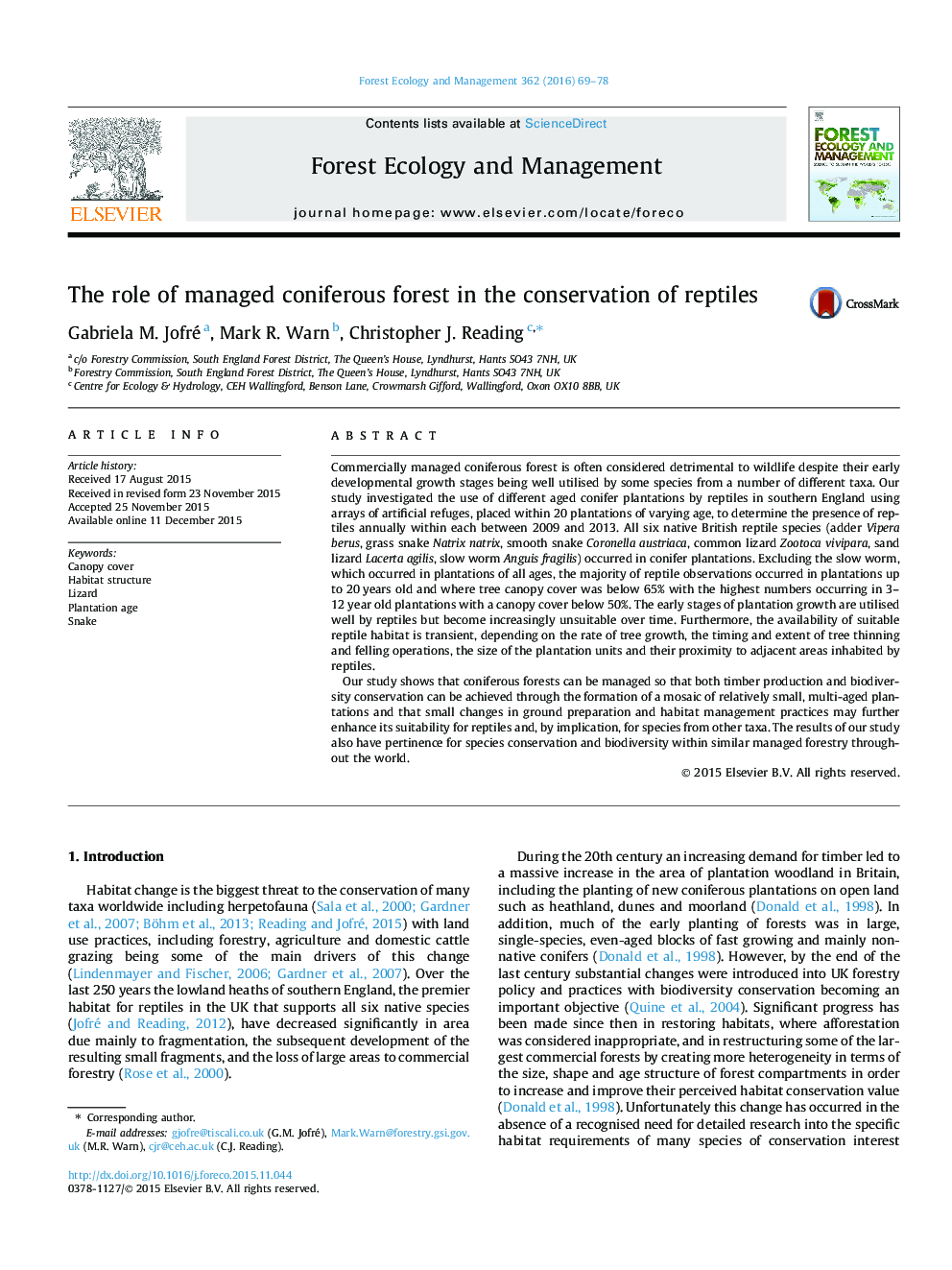| Article ID | Journal | Published Year | Pages | File Type |
|---|---|---|---|---|
| 85973 | Forest Ecology and Management | 2016 | 10 Pages |
•Reptile utilisation of managed conifer plantations of varying age was determined.•3–12 year old plantations had the highest reptile numbers and species diversity.•Plantations with a tree canopy cover greater than 65% had the fewest reptiles.•A mosaic of small plantations of varying age enhanced reptile population stability.•Sensitively managed forests are not the wildlife deserts they are perceived to be.
Commercially managed coniferous forest is often considered detrimental to wildlife despite their early developmental growth stages being well utilised by some species from a number of different taxa. Our study investigated the use of different aged conifer plantations by reptiles in southern England using arrays of artificial refuges, placed within 20 plantations of varying age, to determine the presence of reptiles annually within each between 2009 and 2013. All six native British reptile species (adder Vipera berus, grass snake Natrix natrix, smooth snake Coronella austriaca, common lizard Zootoca vivipara, sand lizard Lacerta agilis, slow worm Anguis fragilis) occurred in conifer plantations. Excluding the slow worm, which occurred in plantations of all ages, the majority of reptile observations occurred in plantations up to 20 years old and where tree canopy cover was below 65% with the highest numbers occurring in 3–12 year old plantations with a canopy cover below 50%. The early stages of plantation growth are utilised well by reptiles but become increasingly unsuitable over time. Furthermore, the availability of suitable reptile habitat is transient, depending on the rate of tree growth, the timing and extent of tree thinning and felling operations, the size of the plantation units and their proximity to adjacent areas inhabited by reptiles.Our study shows that coniferous forests can be managed so that both timber production and biodiversity conservation can be achieved through the formation of a mosaic of relatively small, multi-aged plantations and that small changes in ground preparation and habitat management practices may further enhance its suitability for reptiles and, by implication, for species from other taxa. The results of our study also have pertinence for species conservation and biodiversity within similar managed forestry throughout the world.
